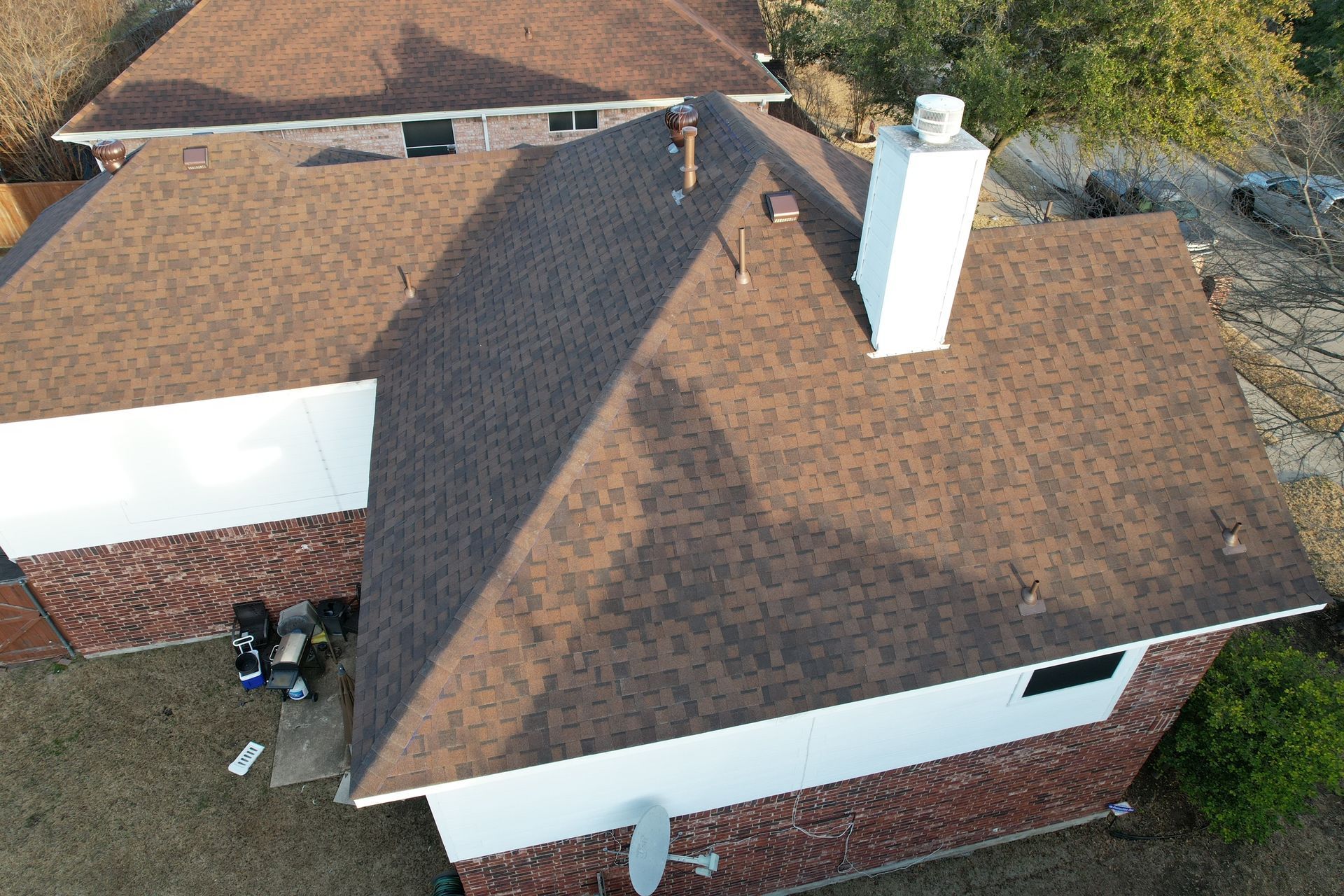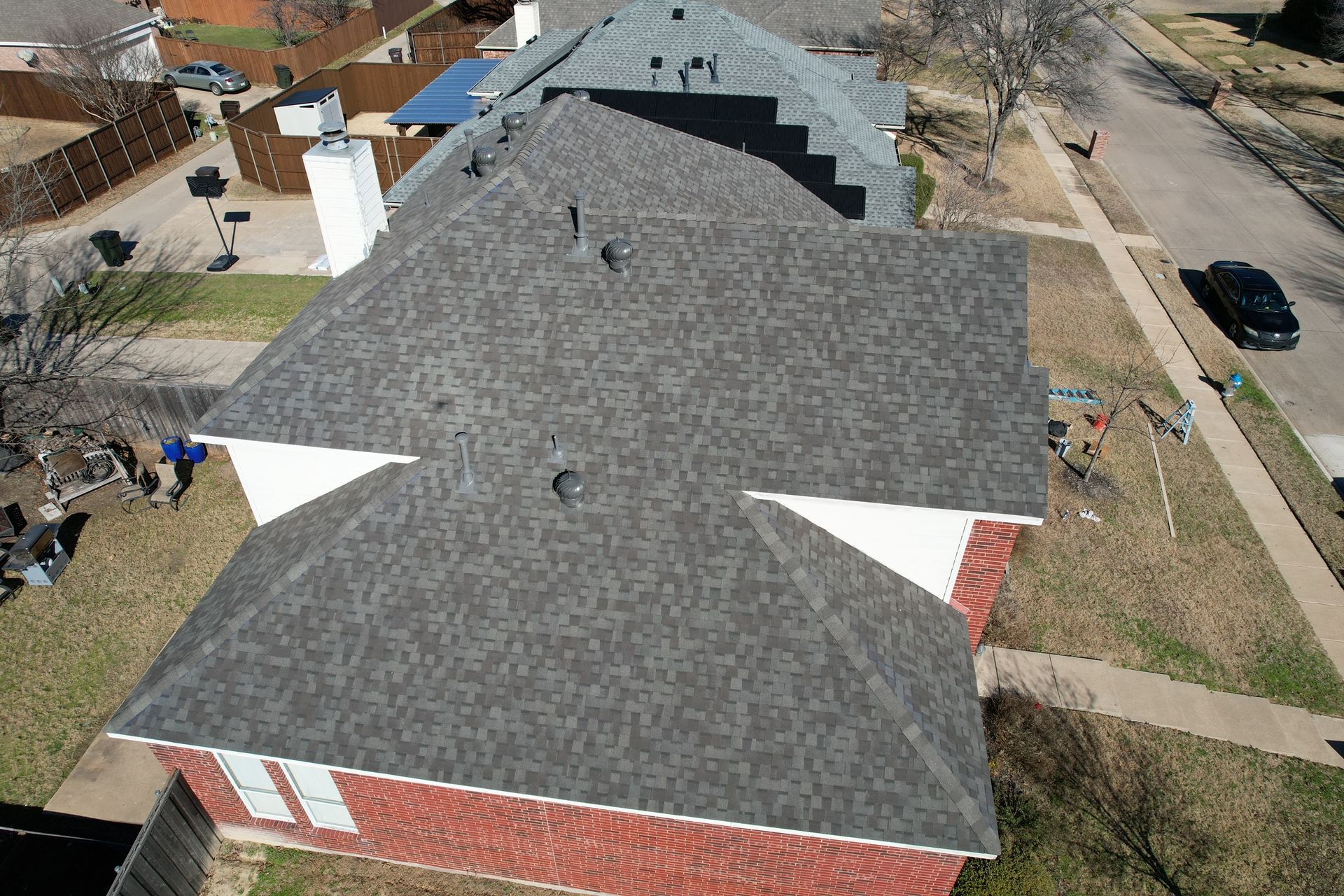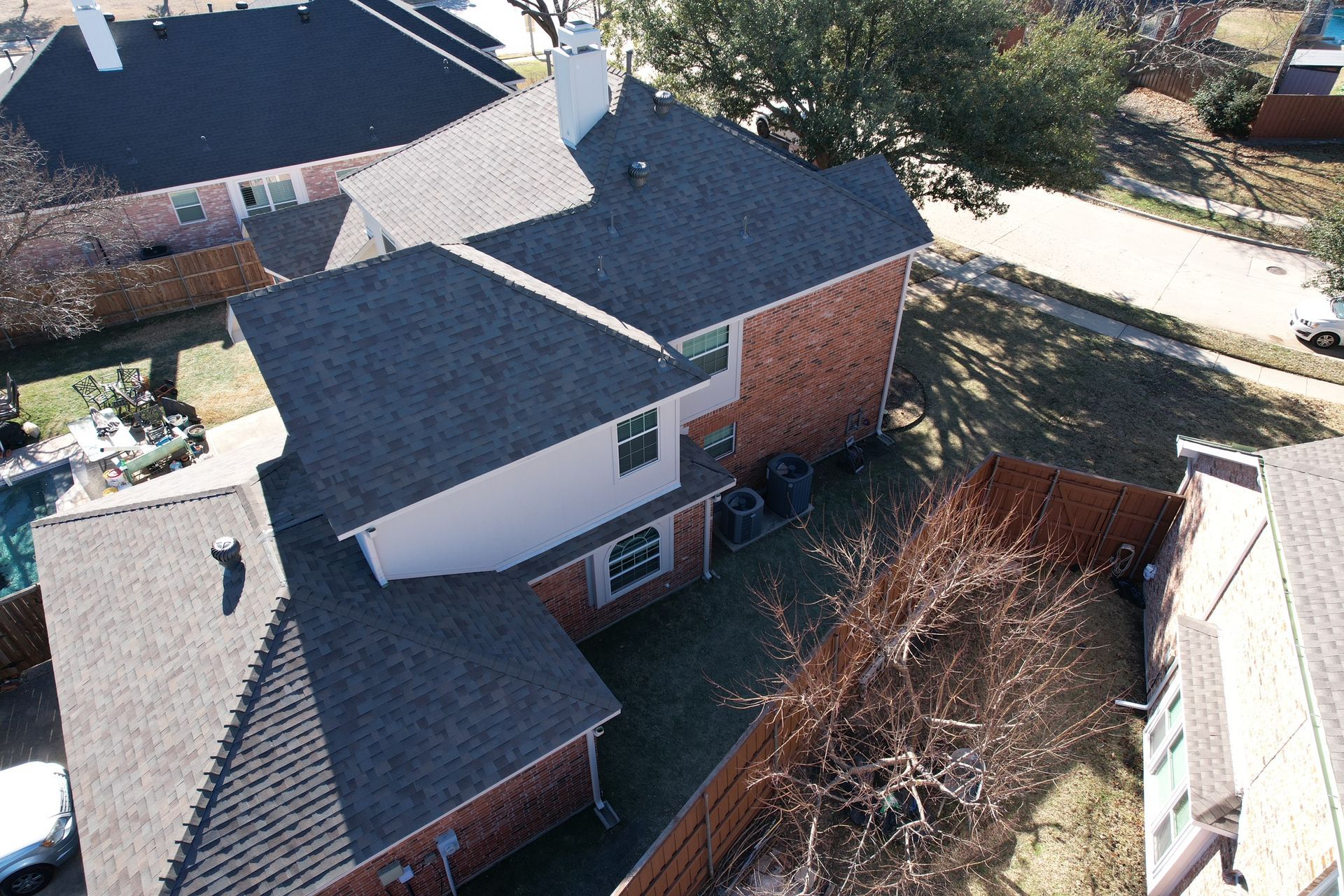Texas Star Roofing is a proponent of energy-efficient roofing products, and highly recommends the use of Radiant barrier decking when possible.
Why? Radiant barrier roof sheathing is the most efficient, cost-effective form of reflective insulation available. Attic radiant heat barrier plywood or OSB is laminated with a thin sheet of aluminum foil. The result is an e-value (emissivity) of .97. That means 97% of the radiant heat generated by the sun is reflected, and therefore does not enter your home’s attic.
This is important because of the lower the attic temperature, the less heat surrounding the AC unit and ductwork, resulting in more efficient cooling and lower utility bills, possibly increasing the life span of the unit itself. The lower the attic temperature, the less heat is transferred into the interior of the home.
More About Texas Star’s Radiant Barrier Installation
Radiant barrier roof decking is only economically feasible when (a) installed either when the home is built, or (b) when a wood shingle or fiber-cement roof installed on lath is replaced and deck installation is required, in order to provide a solid nailing surface for the new roof installation.
It is very important to note that the radiant barrier foil requires a ¾” air space beneath it in order to work. Therefore, Texas Star Roofing removes every other lath board to maximize the benefit from the radiant guard decking. A lath system consists of 1×4 planks installed horizontally with a 4” gap between each board. This results in one half of the surface area of the new roof deck being in contact with the 1×4 planks, thus eliminating the air space beneath the radiant heat barrier.
By removing every other plank, we, in effect, reduce that amount to one-fourth of the surface area, doubling the benefit of the radiant roof sheathing. We do not recommend the removal of every lath board because this can result in structural issues, as the lath lends support to the rafter system. Also, when the home was built, the framers knew it was going to be a wood shingle roof, and, therefore, it was not as critical that the rafters be on exactly 2-foot centers. This results in far more waste compared to a home designed for a plywood deck originally and increases the cost of the re-deck.
The plywood comes in 4’x 8’ sheets and is placed with the 8’ side-lying horizontally. Proper installation requires that the lath boards be moved when necessary, to line up with the horizontal seams. This allows for the fastener pattern to go around the entire perimeter and reduces the chance of curling at the seams.
In re-roofing applications where the roof deck is already in place, an alternative to the radiant barrier plywood or OSB deck installation would be the installation of Polarium Thermal Heat insulation. This is a thermal barrier, rather than a radiant barrier.
The test data contained on the manufacturer’s website, www.heatbarriersystemsinc.com , states that their product has an e-value of .97. But it works in a different way. Rather than reflecting the heat, due to the fact, there is no ¾” airspace beneath it, the thermal barrier transfers the heat through the product to the edges of the roof, thus preventing heat from entering the attic. This product is an aluminum-coated underlayment placed face down over the old felt, directly onto the existing roof deck in lieu of new felt.
The only other radiant barrier foil applications available for retrofit applications are Aluminum Foil Laminates (foil laminated to kraft paper or plastic film) or Reflective Coatings. Both of these methods are also installed on the underneath side of the roof deck in the attic.
To learn more about options for your home or structure, call Texas Star roofing contractors in Plano today at 972-210-2927!
Best of the Best Award Winning Service
We at Texas Star Roofing understand the importance of a safe and secure roof over your family's head. We treat every job as if it were for our own family, taking the time to earn the credentials and licenses that make us nationally recognized experts in this field. We are the team you're looking for for quality work, customer experience, and peace of mind.
Our Top-Rated Reviews
Hear What Makes Us Top Rated
“I can tell you that Texas Star
Roofing was First Class from the initial quotation to the very end.”
- Kenneth Coffing
“They deliver competitive pricing, honest proposals, realistic scheduling and superior workmanship.”
- Edward D. Poletto
972-509-7570
Roofing Contractors Association of Texas 03-0184
© 2023 All Rights Reserved| Texas Star Roofing | Privacy
Roofing Contractors Association of Texas 01-0413





